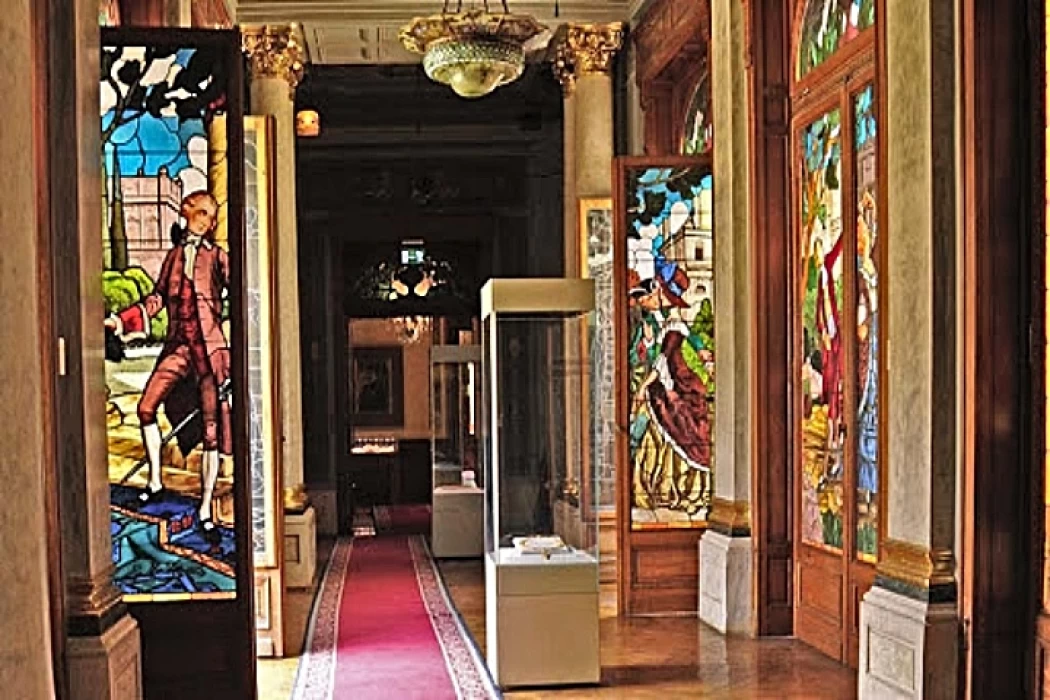
History of The Royal Jewelry Museum
History of The Royal Jewelry Museum
The Royal Jewellery Museum in Alexandria, known as the ‘Palace of the Princesses’, is a piece of heaven on the land of the Zizinia district in Alexandria. A white facade adorns the exterior of the museum building to blend with the royal red colours inside the halls of the ancient museum designed in a luxurious European style by an Italian architect named Antonio to tell an important era of Egypt's modern history.
Gold and platinum cup envelopes, diamond lobes, a gold and diamond-encrusted coin purse, and a pocket watch belonging to the Ottoman sultans. A part of each decorates the halls inside the museum.
The Royal Jewellery Museum, located in the old Zezenia neighbourhood in the city centre, is a unique and distinctive example of Egyptian buildings inspired by the European style, designed by the Italian artist Antonio Lashiak, in the style of European palaces of the Renaissance in the Baroque and Rococo styles, which had the lion's share of influence on the architecture and decorations of the palace, and the floors of the palace are covered with a collection of the finest imported woods.
The museum was originally a private palace belonging to Princess Fatima Zahraa Haidar, daughter of Mrs. Zeinab Fahmy, and Prince Ali Haidar Chanasi, son of Prince Ahmed Rushdi Bey, son of Prince Mustafa Bahgat Fadel Pasha, son of Ibrahim Pasha, son of Mohammed Ali Pasha the Great, and her mother started building the palace in 1919, then Princess Fatima completed the construction and foundation in 1923, and it was used for summer residence until 1952.
Then it became used as a rest house for the President of the Republic until the Republican decision was issued in 1986 to allocate the palace to a museum of royal jewels to display the holdings of the Mohammed Ali family, then it was opened as an official museum on October 29, 1986.
The most important exhibits in the museum include Queen Farida's flower crown in platinum set with diamonds, the crown of Princess Shweikar, the first wife of King Fouad, in platinum set with diamonds and pearls, the grand scarf and necklace of Muhammad Ali Pasha in gold, the gold chess set of King Farouk, a gold cup of King Farouk I in the shape of an ancient Egyptian temple, a box of Queen Farida's wedding jewellery, and a platinum rattle in the shape of a royal crown, according to the archaeologists' dean.














